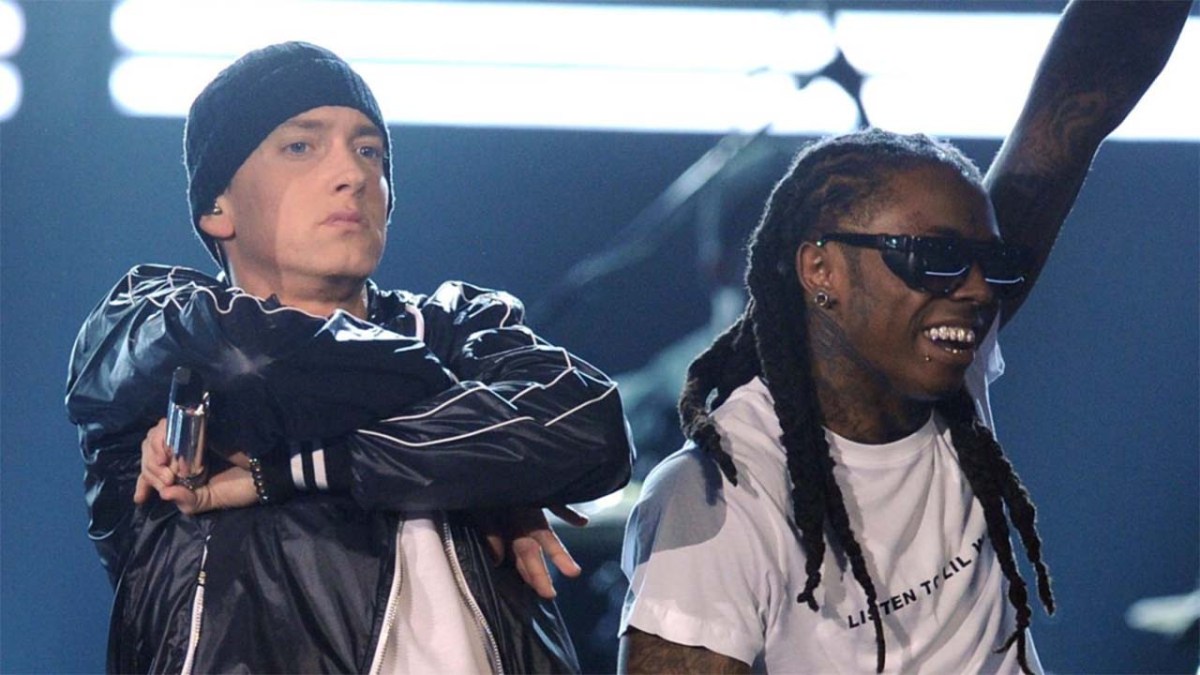Latest News
 BRAND NEW: Chuckyy - My world #hot21radio
BRAND NEW: Chuckyy - My world #hot21radio BRAND NEW: Flippa T - Affirmations #hot21radio
BRAND NEW: Flippa T - Affirmations #hot21radio BRAND NEW: Yeat - The bell #hot21radio
BRAND NEW: Yeat - The bell #hot21radio BRAND NEW: G Herbo - Went legit #hot21radio
BRAND NEW: G Herbo - Went legit #hot21radio Lil Wayne Says Eminem Is His Hip Hop ‘Quarterback’ #hiphop
Lil Wayne Says Eminem Is His Hip Hop ‘Quarterback’ #hiphop Selena Gomez, Benny Blanco Will Feature GloRilla, More on Deluxe ‘I Said I Love You First’ #GloRilla
Selena Gomez, Benny Blanco Will Feature GloRilla, More on Deluxe ‘I Said I Love You First’ #GloRilla EXCLUSIVE: Wack100 on Yella Beezy Charged with Capital Murder for Mo3 #YellaBeezy
EXCLUSIVE: Wack100 on Yella Beezy Charged with Capital Murder for Mo3 #YellaBeezy Selena Gomez and Benny Blanco Set Deluxe Edition of ‘I Said I Love You First,’ Featuring Glorilla and More #GloRilla
Selena Gomez and Benny Blanco Set Deluxe Edition of ‘I Said I Love You First,’ Featuring Glorilla and More #GloRilla Sierra Ferrell & Jelly Roll Join Post Malone At Stadium Tour Kick Off In Salt Lake City #PostMalone
Sierra Ferrell & Jelly Roll Join Post Malone At Stadium Tour Kick Off In Salt Lake City #PostMalone Misa Hylton, Vado Sue Mary J. Blige For $5M #MaryJBlige
Misa Hylton, Vado Sue Mary J. Blige For $5M #MaryJBlige
Hip Hop Turns 50: From a Bronx community room to conquering the world #hiphop
heraldscotland August 11, 2023
hip hop 18

50 years ago, DJ Kool Herc flipped between two records to extend a drum passage, his arms simulating the movement of a merry-go-round. It sparked something far beyond what the partygoers in the first-floor community room of 1520 Sedgwick Avenue could have ever dreamed of.
50 years ago, DJ Kool Herc flipped between two records, his arms simulating the movement of a merry-go-round. The short drum rhythm he played back, again and again, was most likely a thoughtless transition on the original record, but it sparked something far beyond what partygoers in the first-floor community room of 1520 Sedgwick Avenue could have ever dreamed of. This was the ‘break’. It was a humble innovation, yet it sparked a revolution that was at once artistic, social, cultural, and political. Hip hop was a reset from leftfield, reimagining the musical landscape through the simple but perfect formula of rhymes and beats. It wasn’t afraid to take elements from wherever it felt like and it was never scared to be its own thing. It was something for the masses, something for the marginalised, something that elevated the streets to the upper echelons of culture. Half a century on, hip hop has solidified itself. It is now more popular worldwide than rock and pop. There are creators and fans in every corner of the world. It sees its influence infiltrate every strand of pop culture: commercial music, art, fashion, film, dance, literature, and so on. But the path to glory is never a straight and narrow one. ‘Just a fad’ While 1973 was hip hop’s birth, it did not penetrate beyond the grime of the New York City underground until the music industry opened slightly for that first hit to be produced in 1979. That was Rapper’s Delight by the Sugarhill Gang . Erroneously thought of as ‘the first hip hop song’, artists like Grandmaster Flash, Afrika Bambaataa and Grandmaster Caz were cultivating hip hop’s sound, image and slang in the years preceding, along with an army of graffiti artists, breakdancers and DJs. Either way, it was a hit, and the first one. It proved that hip hop could be commercially viable, and the industry took notice. But that didn’t mean they took it seriously. The Sugarhill Gang themselves were a stitched-together outfit from the mind of record executives Joe and Sylvia Robinson looking toward the youth trends of the cultural capital. Most insiders and critics saw it as a fad, much like disco had been previously. Hip hop would need to fight for itself first. The early 80s saw acts like Kurtis Blow sign to a major label and earn a superstar title, but it was later in the decade when structures started to fall in place and things moved beyond just a few marquee names. The growth of record labels like Def Jam and Cold Chillin’ Records gave hip hop the infrastructure it needed. Breakout groups like Run DMC stood bewildered seeing themselves on MTV alongside Madonna and Michael Jackson. Clearly this was something grander, something that could stand on its own, something that could survive the ever-changing cultural moment. Acts like Run DMC saw themselves integrated into the powerful 1980s MTV machine (Image: MTV) The original blueprint of hip hop itself began to change, with less focus on dance and graffiti and heavier reliance on MCing, beat producing, and DJing. In the following years, it was these very things that were perfected and pushed hip hop out into the world. The golden age of hip hop Although regularly debated, the ‘golden age’ of hip hop is usually defined as between 1988 and 1996, beginning with the proliferation of the ‘boom bap’ style and rise of gangsta rap, and ending with the murders of titan rappers Tupac Shakur and The Notorious B.I.G. Hip hop’s themes expanded exponentially in this period. Ideologies and philosophies began to form collectively and individually. The Native Tongues collective, consisting of groups such as A Tribe Called Quest and De La Soul , saw hip hop connect itself vividly to the black experience, favouring pan-Africanism, Afrocentrism and jazz-infused sounds. With Schoolly D’s 1985 single P.S.K. (What Does It Mean?) , the gang warfare of the inner cities and ghettos took centre stage, vastly popularised by the unapologetic Compton group NWA a few years later. Gangsta rap was significant, not only because it portrayed the realities of inter-community factionalism and violence, but it was unremorseful in its portrayal. Gangsta rappers became a tool against orthodoxy, an unrepentant voice of dissent in an otherwise tepid mainstream culture. It uncovered the eyes of the privileged to a street view through stereos and TV sets. Gangsta rap acts like NWA gave mainstream audiences an in-depth look into a more grim, street-based slice of reality (Image: Ruthless Records) The towering figure of Tupac Shakur is still seen as a poet, a small-time revolutionary, and a martyr. He was all those things to varying degrees, but it only scratches the surface of how all-encompassing his art and persona were, and how enthralling hip hop’s major names could truly be. He was a self-proclaimed thug, the words ‘thug life’ tattooed proudly across his stomach. He understood his stature didn’t place him above the street hustler, the drug deal Read more







